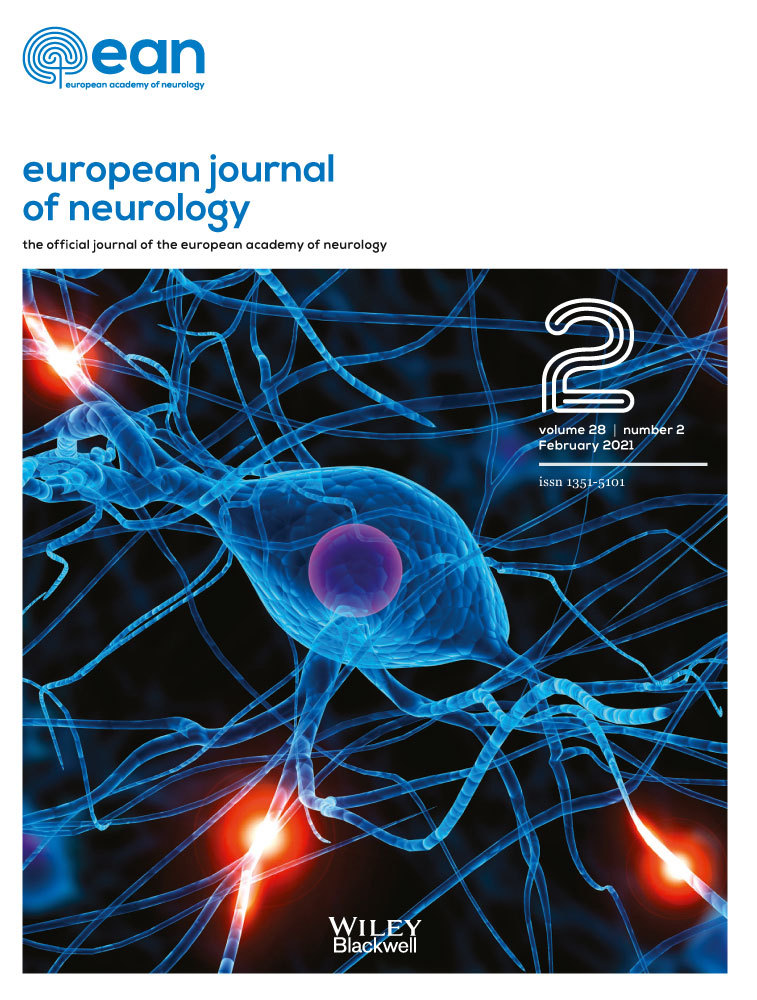Cardiovascular disease, psychiatric diagnosis and sex differences in the multistep hypothesis of amyotrophic lateral sclerosis
Abstract
Background and purpose
Amyotrophic lateral sclerosis (ALS) risk increases with age, and a linear log-incidence and log-age relationship is interpreted to suggest that five to six factors are involved in disease onset. The factors remain unidentified, except that fewer steps are predicted for those carrying a known ALS-causing mutation.
Methods
Men with a psychiatric disorder or cardiovascular disease (CVD) diagnosis have an increased relative risk of ALS. Using the Danish population registries and ALS diagnosis years 1980 to 2017, we tested whether these factors would decrease the predicted steps to disease.
Results
Consistent with previous reports, we find a linear log-incidence and log-age ALS-onset relationship (n = 4385, regression coefficient b = 4.6, 95% confidence interval [CI]: 4.3–4.9, R2 = 0.99). This did not differ when considering ALS cases with a prior psychiatric diagnosis (n = 391, b = 4.6, 95% CI: 4.0–5.1) Surprisingly, it was higher (+1.5 steps, P = 2.3 × 10−5) for those with a prior CVD diagnosis (n = 901, b = 6.1, 95% CI: 5.4–6.8). To control for competing risk of death, a test to investigate if this effect was maintained in those with CVD in the population demonstrated an increased baseline risk and fewer steps to disease (b = 1.8, 95% CI: 1.2–2.3, P = 4.6 × 10−21), which consistent with a positive association of CVD and ALS. Assessing sex differences, our data and meta-analyses (n = 22 495) support half a step fewer for men (−0.4, 95% CI: ±0.24, P = 0.00031) without support for contributing differences explained by menopause.
Conclusions
Any factor associated with ALS disease onset may be relevant for understanding disease pathogenesis and/or counselling. Modelling disease incidence with age demonstrates some insight into relevant risk factors; however, the outcome can differ if competing risks are considered.
Disclosure of conflicts of interest
The authors declare no financial or other conflicts of interest.
Open Research
Data availability statement
Access to individual-level Denmark data is governed by Danish authorities. These include the Danish Data Protection Agency, the Danish Health Data Authority, and Statistics Denmark. Each scientific project must be approved before initiation, and approval is granted to a specific Danish research institution. International researchers may gain data access through collaboration with a Danish research institution.




